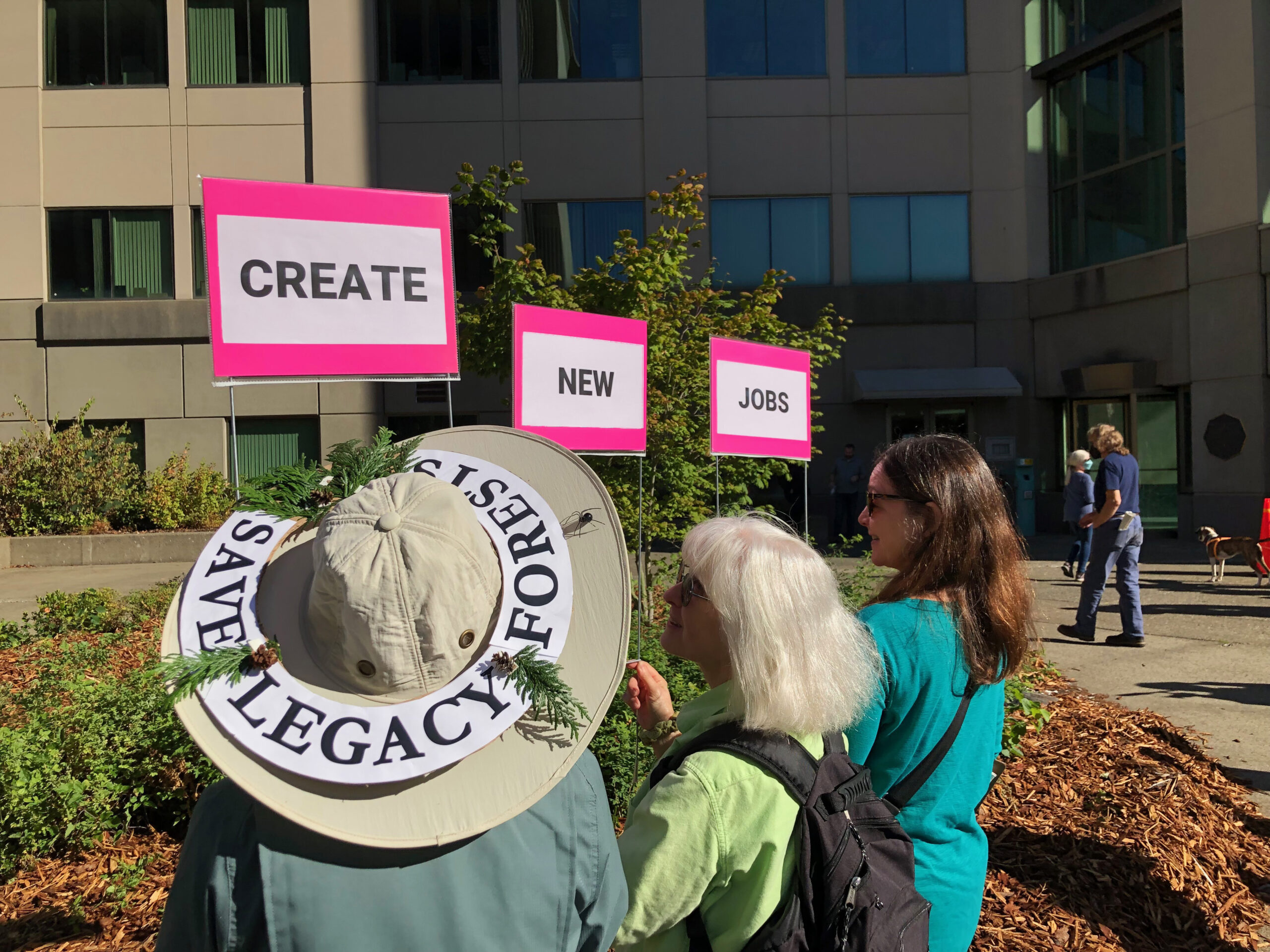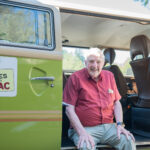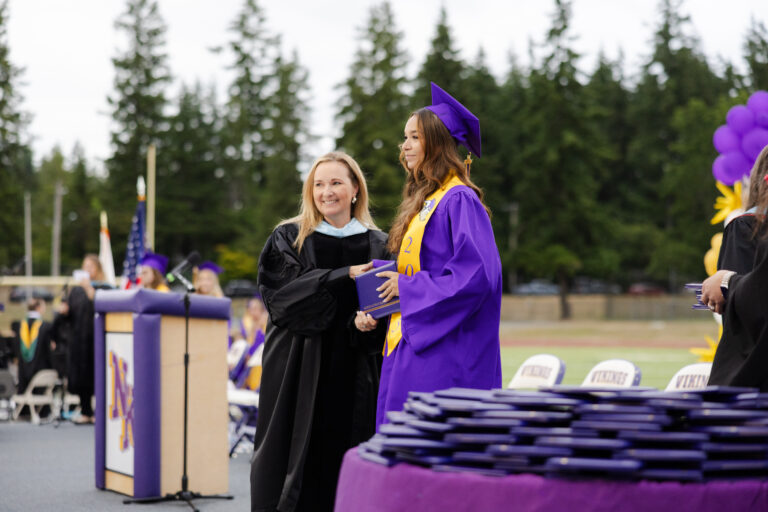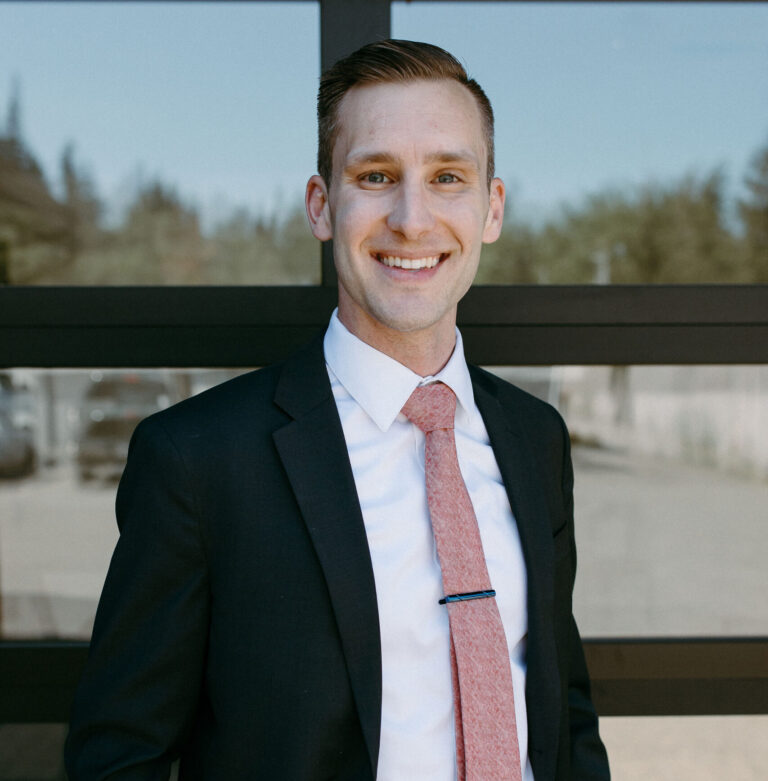Inside the Work of the Environmental Coalition

When residents near Hansville first heard that aerial pesticide spraying was coming to the clear-cut timberlands just outside their community, they didn’t know they were about to start a countywide movement.
The news hit in 2018, at the height of national headlines about glyphosate — the active ingredient in Monsanto’s Roundup — and the growing list of lawsuits linking it to cancer and other serious illnesses. People in Kitsap County began to connect the dots between those headlines and the reality in their own backyard.
“Our goal is to champion the protection and restoration of Kitsap County’s natural environment and being sure that it’s healthy, both for people and for all of life,” says Beverly Parsons, a longtime member and current secretary of the Kitsap Environmental Coalition (KEC).
For KEC, that means keeping Kitsap’s water, air, and soil clean. KEC is determined to Keep Kitsap Green.
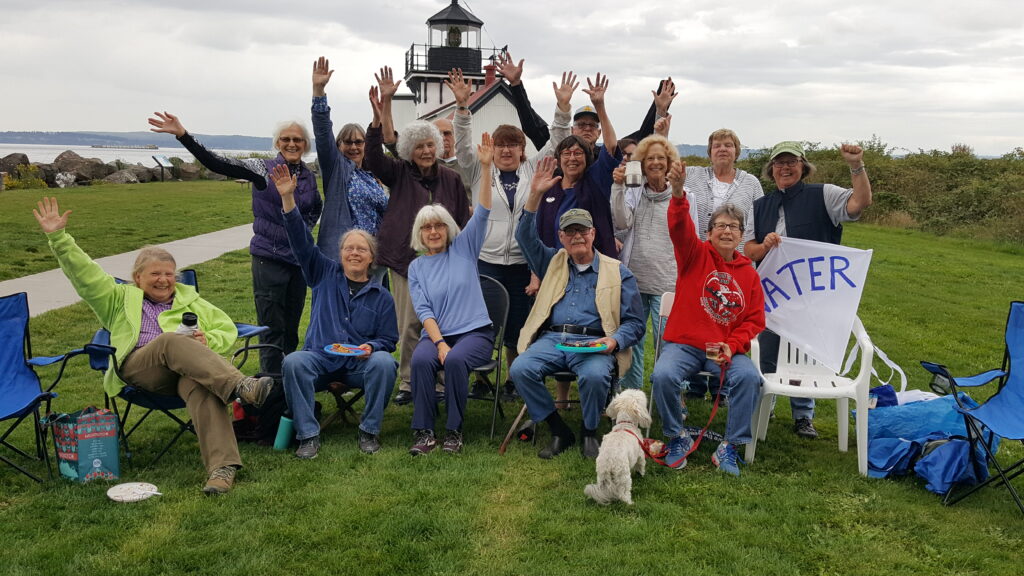
The Spark: Hansville Clear-Cut
The coalition’s origin story begins with the timber company Pope Resources, which owned a tract of forest outside Hansville. After clear-cutting the land, Pope planned to spray pesticides from the air to control regrowth.
The plan immediately raised red flags. Residents worried about toxins drifting into their neighborhoods, contaminating wells, harming wildlife, and endangering human health. The timing made those fears even sharper.
“It was a heightened moment of awareness,” Parsons said. “People realized we needed to protect our environment from this.”
Digging into the details, locals discovered Pope had divided its property into smaller units to avoid a full review under the State Environmental Policy Act (SEPA).
“People said, ‘Wait a minute. That doesn’t seem right,’” she said.
Determined to fight, they filed an appeal to stop the spray. But they quickly ran into the harsh economics of environmental advocacy. Filing the appeal required thousands of dollars in fees. When they learned a lawyer would cost $35,000, the challenge became even steeper.
The community rallied. A benefit auction raised $16,000 — an impressive amount for a fledgling grassroots effort — but still far short of what was needed.
“So all this awareness was coming to people,” she said. “How do you stand up for things with all these costs? It’s so extreme, and so what you were seeing was a combination of people concerned about the environment, but also realizing how the whole system works.”
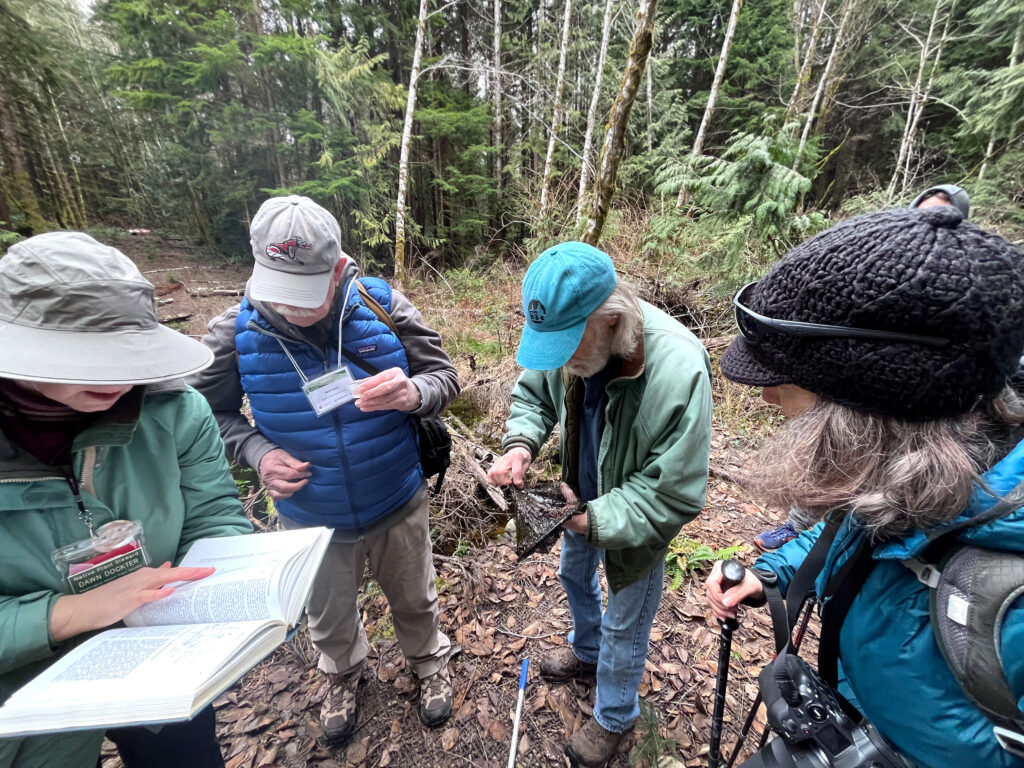
From Protest to Policy
The Hansville fight became the crucible in which KEC was forged. Within months, the group grew to hundreds of concerned residents. A handful had the skills and experience to give the movement staying power — a CPA, a business administrator, people who knew how to create a nonprofit.
“We were lucky to have people with the right skills,” she said. “That’s what really got us organized.”
KEC soon notched early wins, persuading the North Kitsap School District and Kitsap County to stop spraying glyphosate on school grounds and roadsides.
“One of our members’ dogs got sick after walking along a sprayed roadside,” she said. “It made the issue real for people.”
Building a Broader Mission
While pesticide spraying remained a central issue, KEC expanded its work to address land use, development pressures, and climate change. They became regular voices at Board of Natural Resources meetings, testified at public hearings, and held community walks in local forests.
“It was about getting people involved and making their voices heard,” she said.
The coalition partnered with other organizations — including 350 Seattle and the Pacific Northwest Forest Climate Alliance — to share information and coordinate action across counties.
“You need to know there are other people dealing with the same thing,” she said. “It’s about sharing information and building support.”
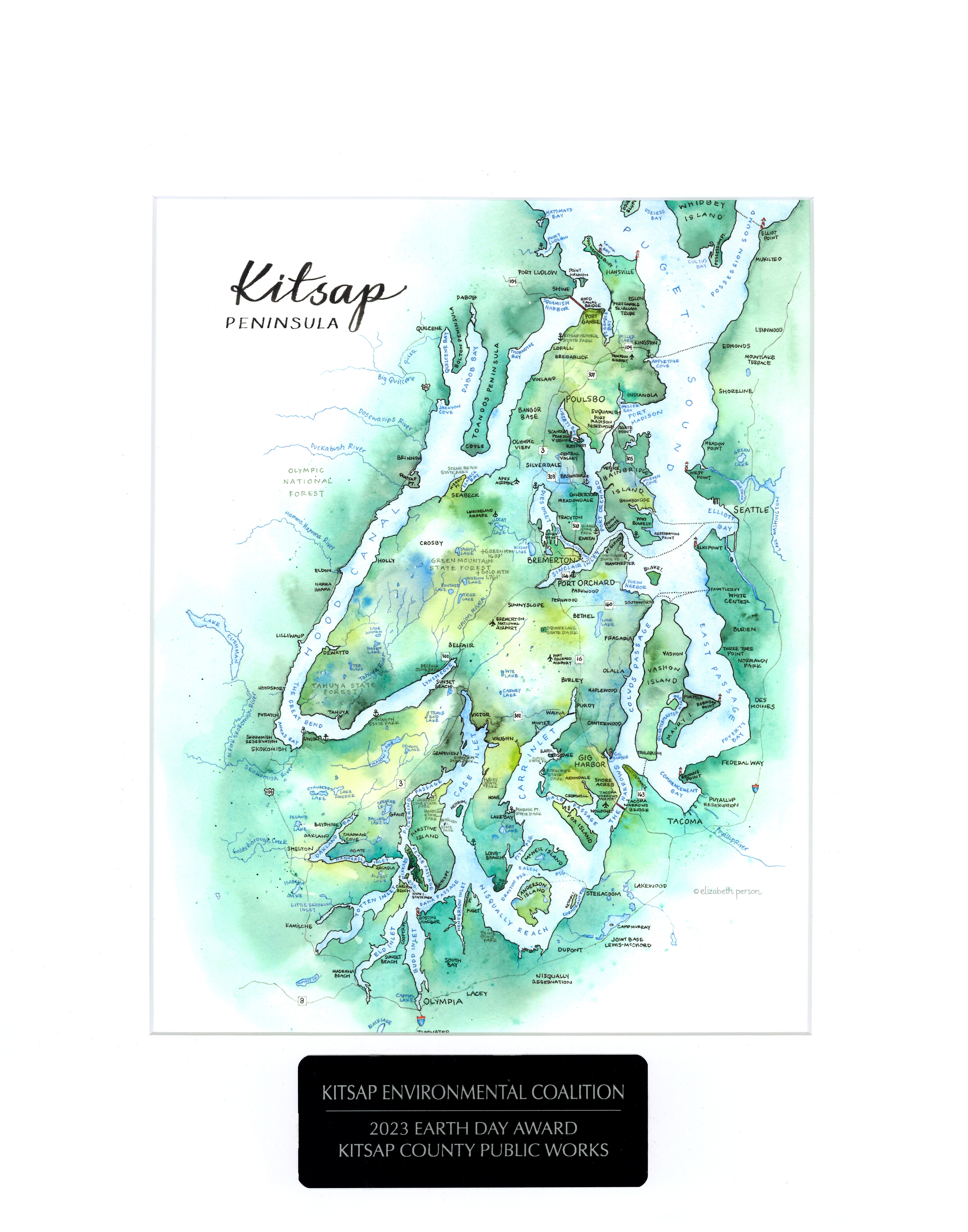
Education as a Tool for Change
KEC quickly realized that protecting the environment wasn’t just about fighting harmful projects — it was about changing public understanding. One of their most effective tools became a monthly educational forum at Kingston’s Village Green.
“We started out showing films like Behind the Emerald Curtain, about clear-cutting in the Pacific Northwest,” she said. “Now we have speakers and discussions on a range of topics. We get about 50 people each time. It’s about building awareness and community.”
The coalition’s newsletter, with nearly 900 subscribers, is another vital tool.
“Our newsletter is our main communication structure,” she said. “It’s how we mobilize people.”

The Challenges of Staying Grassroots
For all its successes, KEC faces the realities of being a volunteer-run nonprofit.
“We’re strictly a volunteer organization, so there’s always a risk of burnout,” she said.
Board members are limited to two consecutive two-year terms, and steering committee members to two three-year terms, to keep volunteers from burning out. Funding is another constant hurdle.
“We need more financial resources to maintain our structure and sometimes hire part-time help for media or legal issues,” she said. “But we do our best to make it work.”
Still, their work hasn’t gone unnoticed. In 2023, KEC received an Earth Day Award from the Kitsap County Board of Commissioners for its contributions to local environmental advocacy.
A Philosophy of Connection
At the core of KEC’s work is a belief that environmental protection is not just about stopping harm — it’s about imagining and creating a better future.
“We want to bring a broad understanding of the environment, focusing at multiple levels — from planting trees to influencing policy,” she said. “We’re not just about saying ‘no’ to things. We want to create the future we do want.”
That philosophy rests on three guiding principles: honest and respectful relationships, scientific and fact-based inquiry, and deep public engagement.
“We want debate and discussion. We want to hear different voices and talk through issues,” she said. “It’s about building a culture of awareness and action.”
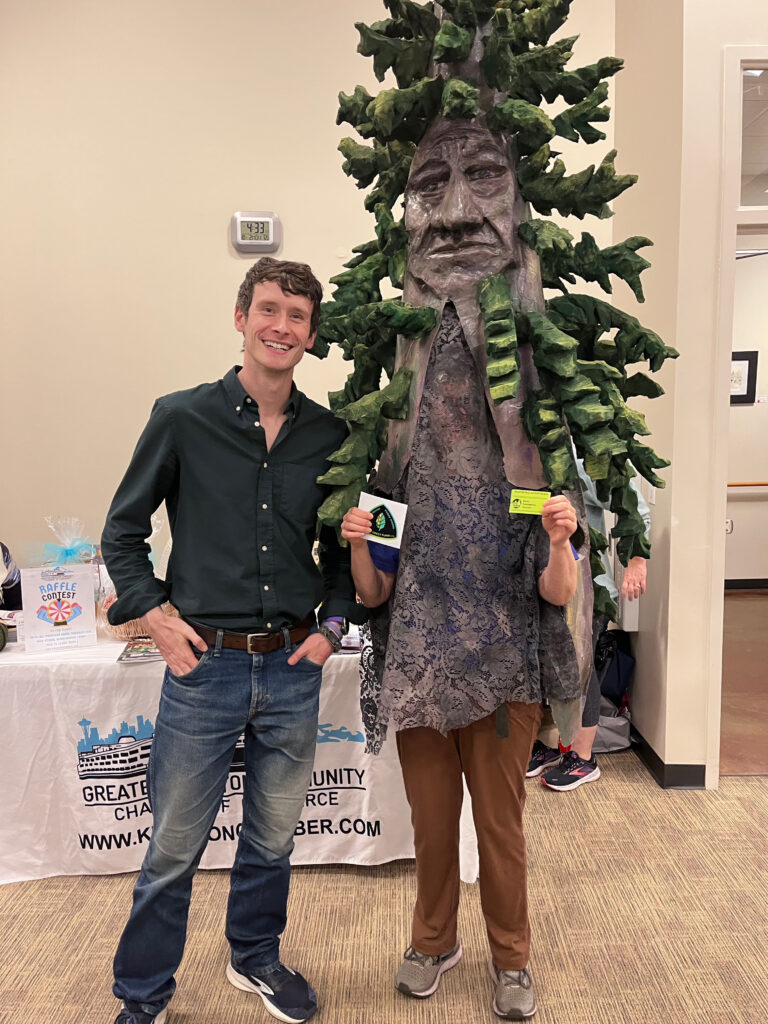
From “No Net Loss” to “Net Ecological Gain”
KEC’s vision for the future is rooted in a shift in environmental policy goals.
“We’re moving from the idea of ‘no net loss’ to ‘net ecological gain,’” she said. “History shows that ‘no net loss’ often means slow net loss. We want to actually improve the environment, not just slow its degradation.”
The coalition’s five-year plan outlines four focus areas: education, policy advocacy, communications, and partnerships. They aim to expand their work beyond North Kitsap, connecting with communities across the county.
Partnerships remain central.
“We’ve brought together groups concerned about overdevelopment in places like Royal Valley, Indianola, and Arborwood,” she said. “Just having people talk and share experiences is powerful. We’re not doing everything ourselves — we’re convening, connecting, and amplifying voices.”
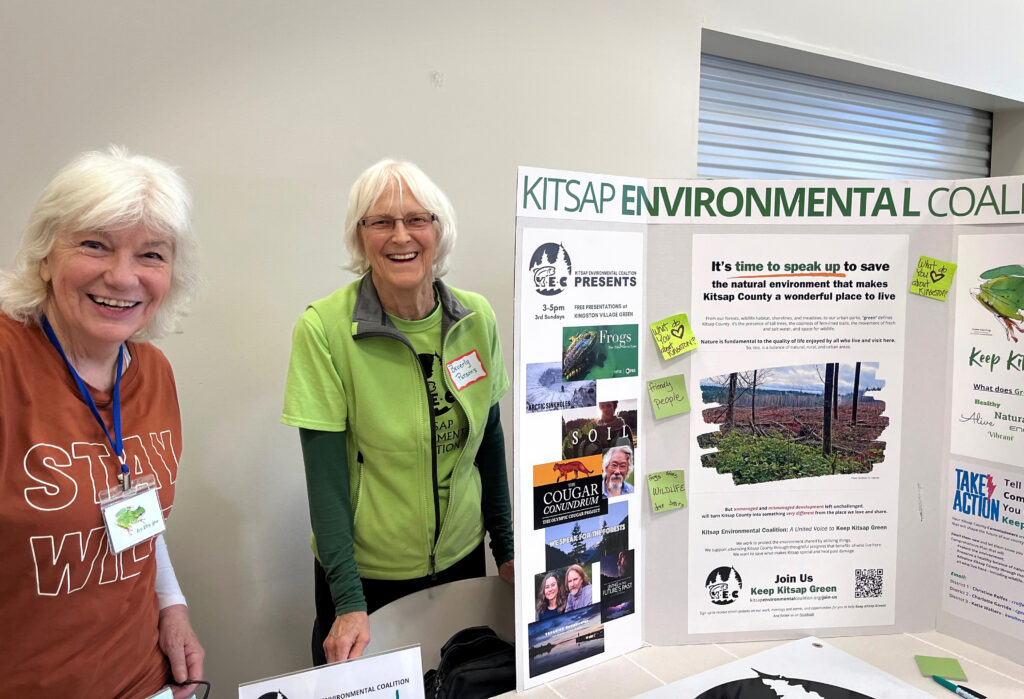
The Personal Stakes
For Parsons, the work is deeply personal.
“I grew up in a rural area and saw how important the land is,” she said. “Kitsap is beautiful, but it’s on the brink of being destroyed by overdevelopment. If we don’t protect it, we lose something essential — not just for ourselves, but for future generations.”
She recalls a rally in Olympia where a Native elder reframed the concept of stewardship.
“He said, ‘The trees are stewards of us.’ That really stuck with me,” she said. “If we don’t take care of them, we lose the very things that take care of us.”
A Call to Action
Parsons’s message to the community is straightforward:
“Join KEC, come to our forums, pay attention to what’s happening in the environment,” she said. “Notice the birds singing — or not singing. Engage with nature every day.”
KEC’s open membership policy requires only that people agree with its guiding principles and pay a modest annual fee. There’s no requirement to join a committee or attend meetings, though there’s always an open invitation to do more.

The Road Ahead
As Kitsap County faces the twin pressures of rapid growth and environmental vulnerability, KEC stands as watchdog, convener, and motivator.
“We can’t solve all the problems in the world,” she said. “But we can build honest relationships, use science, and work together for our county.”
Perhaps KEC’s most enduring achievement is its ability to give voice to the community — to connect neighbors, foster debate, and turn concern into action.
“It’s about creating the future we want, and making sure that future is green,” she said.
Keep in touch with our news & offers
Subscribe to Our Newsletter
Thank you for subscribing to the newsletter.
Oops. Something went wrong. Please try again later.

